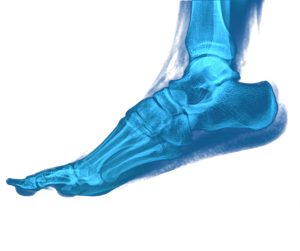Whether you have twisted your ankle during a morning jog, stepped awkwardly off a curb, or suffered an injury during sports, the immediate worry that pops up is ‘How serious is this injury going to be?’
Many will get back home and attempt to manage their ankle injury themselves. Knowing when to seek expert care can make the difference between a complete recovery and creating lasting problems.
Understanding warning signs and the recovery timeline will help you make informed decisions about your ankle health and prevent future complications.
Understanding Ankle Sprain Severity
Ankle sprains occur when ligaments stretch beyond their normal limits or tear completely. The injury typically happens when your foot rolls outward unexpectedly, causing the ankle to move into an unnatural position. Not all sprains are equal, and understanding the different grades helps determine appropriate treatment paths.
- Grade 1 sprains involve mild stretching of ligaments with minimal tissue damage.
- Grade 2 sprains feature partial tearing of ligaments.
- Grade 3 sprains involve complete ligament rupture.
Each category presents distinct challenges and recovery requirements.
Immediate Warning Signs
Certain symptoms of a sprained ankle require immediate medical attention.
- Severe pain that doesn’t improve with rest and elevation.
- Visible deformity of your ankle joint represents a medical emergency.
- Complete inability to move your ankle or toes also demands urgent consultation.
- If you cannot bear weight on your injured foot within a few hours. (may indicate potential ligament damage or a fracture).
- Numbness, tingling, or coldness in your toes. (may suggest nerve or blood vessel damage)
Progressive Symptoms
Beyond immediate concerns, progressive symptoms developing over the first 24 to 48 hours can signal the need for specialist intervention.
- Swelling that continues increasing despite proper home care, including rest, ice, compression and elevation (RICE), may indicate more extensive tissue damage than initially apparent.
- Pain intensifying rather than gradually improving after the first day, suggests complications requiring professional assessment
Home Treatment Limitations
Many people wonder when to go to the doctor for a sprained ankle after attempting self-care measures. If your ankle shows no improvement after three to five days of appropriate home treatment, professional evaluation becomes necessary.
Home care should include Rest, Ice application for 15-20 minutes several times daily, Compression with elastic bandaging, and Elevation above heart level when possible (RICE).
However, these measures have limitations. If you cannot walk normally after one week, or if pain remains severe enough to require regular pain medication beyond the initial injury period, specialist consultation is warranted.
Chronic and Long-term Concerns
Untreated or inadequately managed ankle sprains can develop into chronic problems. Persistent weakness, frequent re-injury or ongoing instability suggests inadequate healing of damaged ligaments.
Recurring ankle sprains may indicate chronic ankle instability requiring professional management. Similarly, if you develop arthritis-like symptoms, including stiffness, grinding sensations or weather-related pain changes, you should consider specialist attention.
These issues often require specialised rehabilitation programs or even surgical intervention.
Additional Risk Factors
Certain individuals face higher risks of complications and should seek early professional intervention:
- Athletes requiring quick return to sport
- Individuals with diabetes
- Individuals with circulation problems
- Individuals taking blood-thinning medications
People at higher risk will need more careful monitoring and professional guidance.
Age also influences recovery patterns. Older adults may experience more difficulties during healing and have increased complication risks, making professional evaluation more important even for seemingly minor injuries.
Making the Right Decision
The symptoms of a sprained ankle vary significantly between individuals and injury types. Trust your instincts about your body’s signals. If something feels wrong or different from previous minor injuries, seeking professional advice provides peace of mind and appropriate care direction.
Professional consultation doesn’t necessarily mean expensive treatments or lengthy recovery periods. Often, early intervention prevents more complex problems requiring extensive future treatment.
Remember that ankle health affects your entire body’s function and mobility. Protecting your ankles through appropriate care maintains your overall quality of life and activity levels for years to come.
Don’t let an ankle injury compromise your mobility and quality of life. At the London Foot and Ankle Centre, our experienced consultants provide comprehensive evaluations and personalised treatment plans for all ankle injuries.
Contact us today to schedule your consultation and take the first step toward getting back on your feet with confidence.


Matthew Solan
This article was reviewed by Mr Matthew Solan, a consultant orthopaedic surgeon. He has been with LFAC since its formation in 2003.


